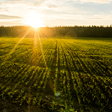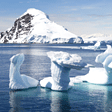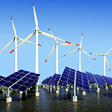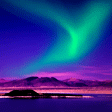- Home >
- Our Actions >
- Ambassador report
2
Comments
Wildfire: It's Causes, Effects, Ecological Importance and Prevention |
|---|
|
by Bharat Adhikari | 26-03-2018 12:45
|
|
Wildfire: A wildfire or wildland fire is a fire in an area of combustible vegetation that occurs in the countryside or rural area. Depending on the type of vegetation where it occurs, a wildfire can also be classified more specifically as a brush fire, bush fire, desert fire, forest fire, grass fire, hill fire, peat fire, vegetation fire, or veld fire.
Causes of Wildfire: Wildfires always start by one of two ways - naturally caused or human caused. Natural fires are generally started by lightning, with a very small percentage started by spontaneous combustion of dry fuel such as sawdust and leaves. On the other hand, human-caused fires can be due to any number of reasons. Forest or wildlife fires spread at different speeds depending on vegetation, weather conditions, and physical features. Discovered fossil charcoal indicate that forest fires are not new to modern history as some date back to over one hundred million years ago. Some classifications include smoking, recreation, equipment, and miscellaneous. Human-caused fires constitute the greater percentage of forest fires in our forests, but natural fires constitute the great majority of the total area burned. This is because human-caused fires are usually detected early in their duration, and therefore they are usually contained easily. Natural fires, on the other hand, can burn for hours before being detected by firefighting authorities.
Human Causes: 90% of all wildfires are caused by humans. Human activities near or within forested areas are the number one cause of forest fires. Smoking near vegetation can cause a widespread fire when a smoker throws a cigarette into vegetation without completely extinguishing its burning butt. While most smokers throw lit cigarettes innocently, their actions have caused several forest fires throughout history. Some fires may take a few hours before being noticed as the fire starts small and spreads slowly at first before gaining momentum. Equipment such as machinery used in logging and hunting can also cause fires. Bullets hitting on some dry vegetation may result in fires. Petroleum products used in logging equipment can cause fires when there is a leak onto the vegetation. Other causes include campfires that are not well monitored or put off entirely. Electric faults from facilities or electricity plants near forests can also cause fires. In some extreme cases, people have deliberately caused fires during hunting to corner wild animals while others burn forests to clear the way for agriculture or development activities. Lastly, some people just start fires without any reason (arson).
Natural Causes: Lightning is the biggest natural cause of forest fires. The different lightning strokes of varied electric voltages cause fire through directly igniting vegetation with high currents. Lightning fires are always more common immediately after dry seasons when vegetation is still dry. Lightning fires destroy more vegetation than human-caused fires. This is because lighting fires occur in remote areas far from human presence and are not notice in time, unlike fires caused by human activities. Lightning caused fires also occur in rough terrains and dangerous places which makes it hard for fire suppression equipment and personnel to reach the fire on time. In rare occurrences, volcanic activities such as eruptions and lava flow can cause fires which are difficult to put out because of the lava flow and other associated risks. In most cases, firefighters try to create a buffer zone where they can manage the fires. Spontaneous combustion of dry leaves and vegetation may also be responsible for some fire outbreaks.
Effects of Wildfires: Wildfire is a part of nature. It plays a key role in shaping ecosystems by serving as an agent of renewal and change. But fire can be deadly, destroying homes, wildlife habitat and timber, and polluting the air with emissions harmful to human health. Fire also releases carbon dioxide- a key greenhouse gas—into the atmosphere. Fire’s effect on the landscape may be long-lasting. Fire effects are influenced by forest conditions before the fire and management action taken or not taken after the fire. Some of the other effects are listed below in points: Loss of Ecosystems and Biodiversity Impacts to Human Well-being and Health
Ecological importance of wildfires: Although wildfires cause a lot of destruction and loss of lives, they have a few benefits too. The old vegetation burnt down allows new ones to spring up. There is always remarkable growth after a wildfire. Some tree species have their seeds opened and thrown to ash-enriched soils and begin to grow. For example, the Jack pine’s cones open when exposed to intense heat from the fire and drop seeds into the ash-enriched soil. So, when the Jackpine dies in the fires, new ones grow. Burned forests serve as important habitat for many species, such as the Black-backed Woodpecker, Picoides arcticus, that is specialized to live and thrive in forests that have experienced severe burning. Wildfires also promote flowering and fruiting of some plant species. This is because wood ash is one of the best fertilizers around. Wood ash contains just about every nutrient plant need including magnesium, potassium, and calcium. Ash also contain carbonates that help neutralize acidic soils to allow healthy growth of plants.
Prevention: Wildfire prevention refers to the preemptive methods aimed at reducing the risk of fires as well as lessening its severity and spread. Prevention techniques aim to manage air quality, maintain ecological balances, protect resources, and to affect future fires. North American firefighting policies permit naturally caused fires to burn to maintain their ecological role, so long as the risks of escape into high-value areas are mitigated. However, prevention policies must consider the role that humans play in wildfires, since, for example, 95% of forest fires in Europe are related to human involvement. Sources of human-caused fire may include arson, accidental ignition, or the uncontrolled use of fire in land-clearing and agriculture such as the slash-and-burn farming in Southeast Asia. Most natural fires are usually monitored and allowed to burn, with the aim of balancing a forest's ecology. Vegetation may also be burned occasionally in order to balance species. Authorities have undertaken awareness campaigns on the causes of fires to reduce human initiated fire incidences. In some cases, firefighters burn sections of forest vegetation to control possible fires in the future by creating buffer zones. Wildfire suppression can be done in various ways. Simple techniques such as throwing layers of soil can be used. In some cases, unmanned aerial planes can be used to drop water and fire retardants. The destructive effects of wildfires can be mitigated by being responsible when handling aspects that could trigger any fire and reporting early when we witness any nature-instigated fire.
More on:
Image from:
|

|
|
|










 Previous : Pour the water to the hot spot...
Previous : Pour the water to the hot spot...









2 Comments
Hello Bharat, we often get to the news of wildfire, but we simply just treat 'them' in numbers such as 100 hectare. Apart from statistical report, life cycles and ecosystem of forest are damaged. Though there are lots of causes for wildfire, but we do not know human activities are the main causes for the huge ratio of wildfires.
Thanks for the report!
Posted 29-03-2018 19:26
Hello Bharat!!
It is quite new to learn that wild fire could be distinguished in to brush fire, bush fire, desert fire, forest fire, grass fire, hill fire, peat fire, vegetation fire, and veld fire! As the report says, most wild fire is caused by humans. Especially the ignorance in trashing cigarettes on forest grounds are a big problem. I hope reports like this could more people about the severity of wild fire issues.
Thanks for the report!!
:)
Posted 27-03-2018 12:00